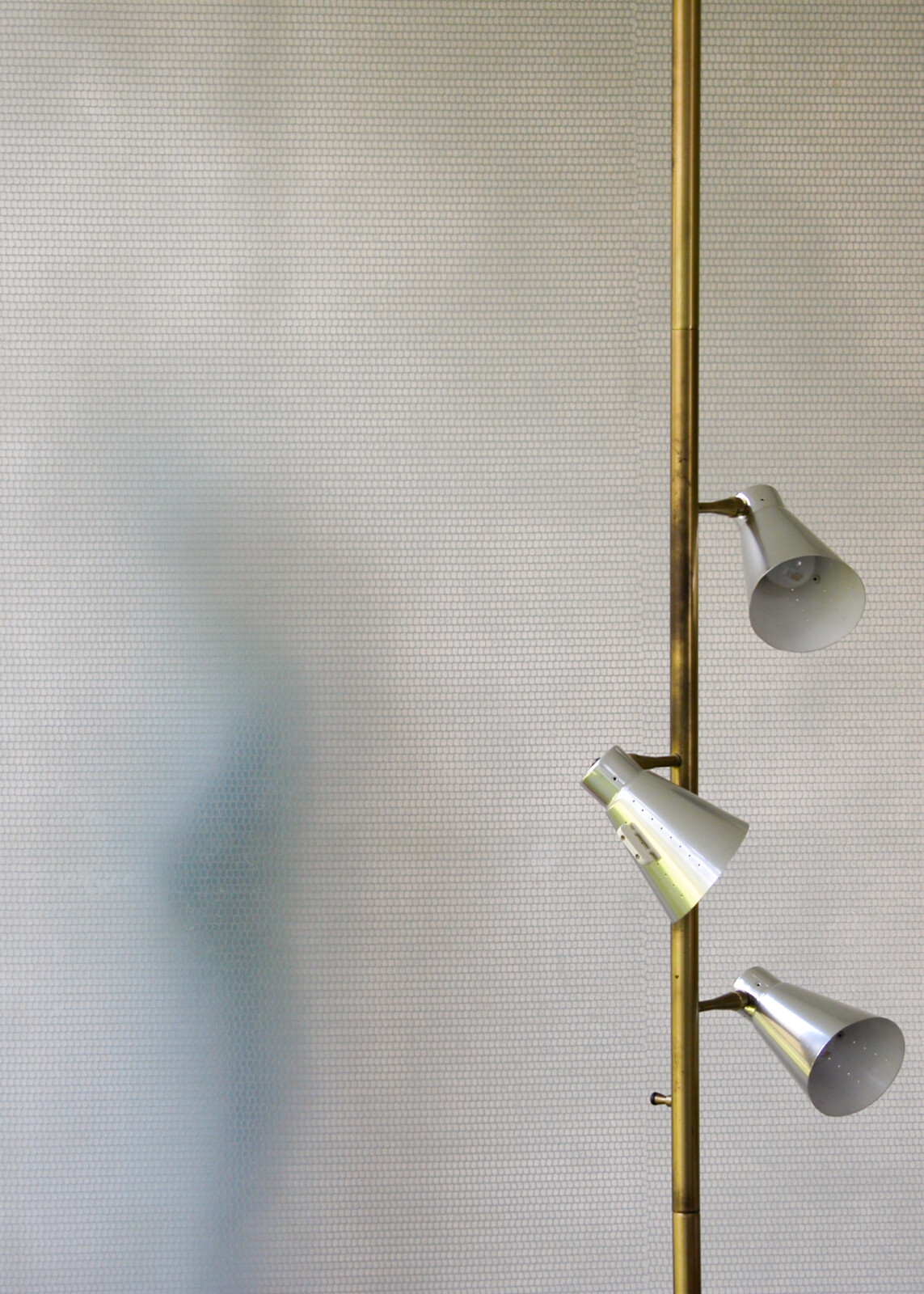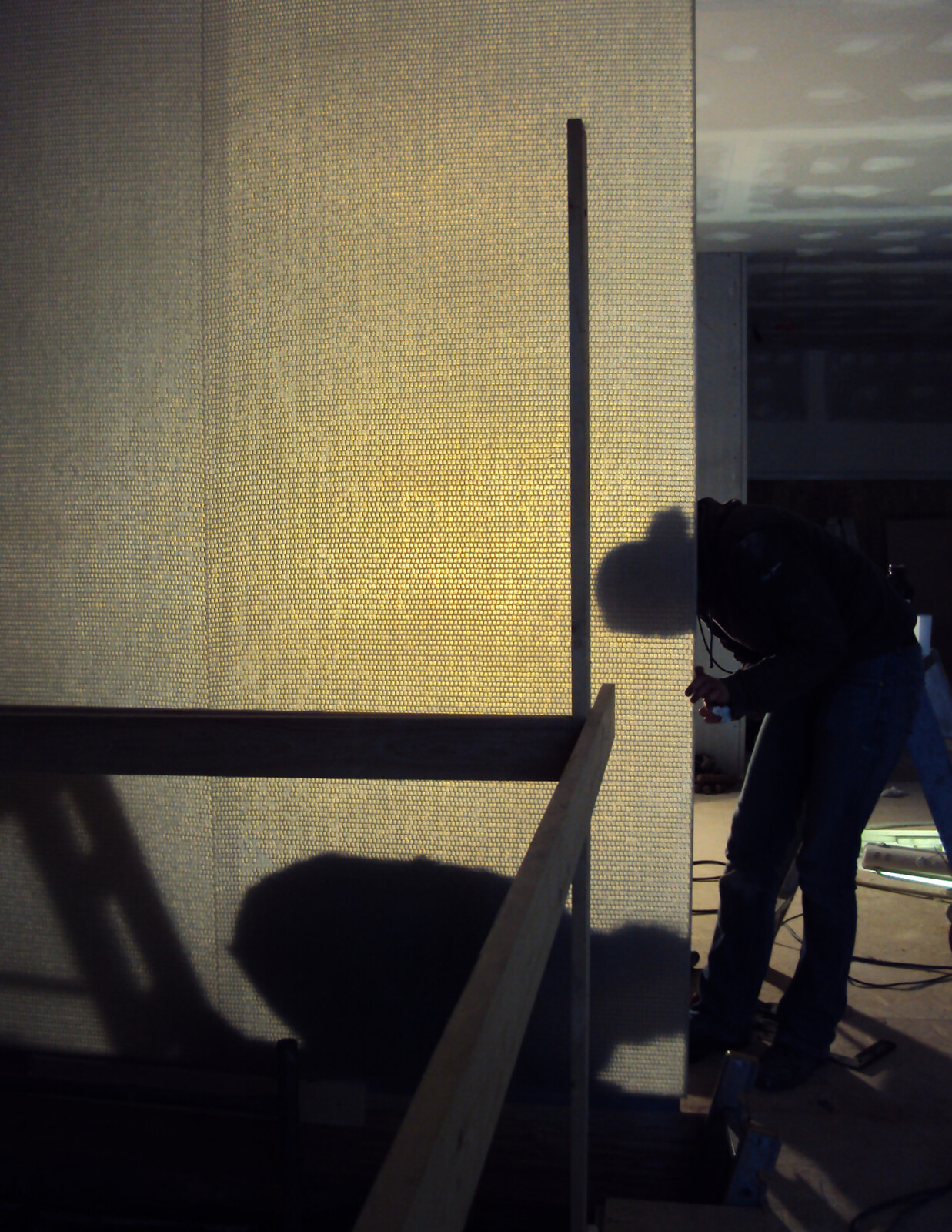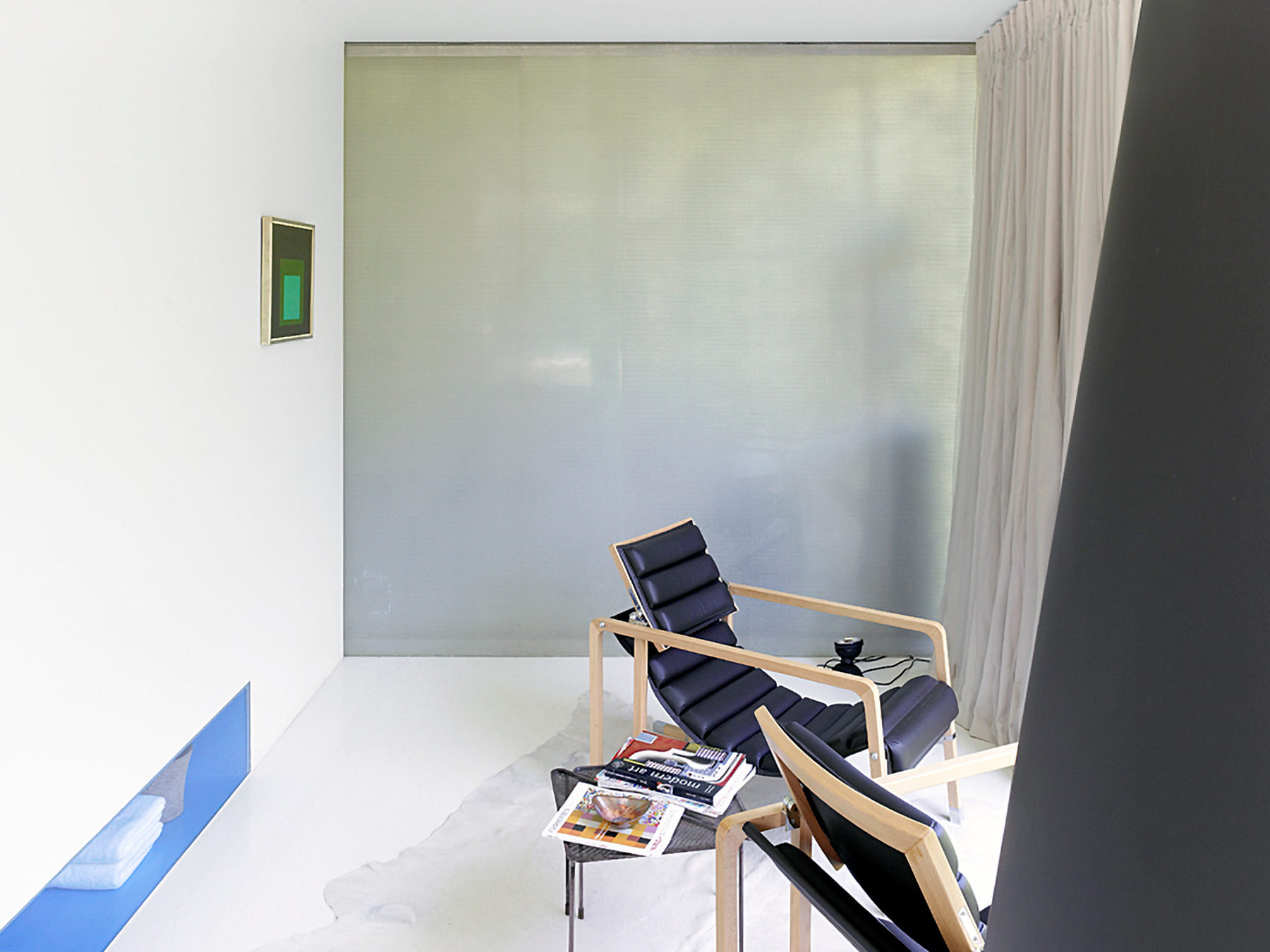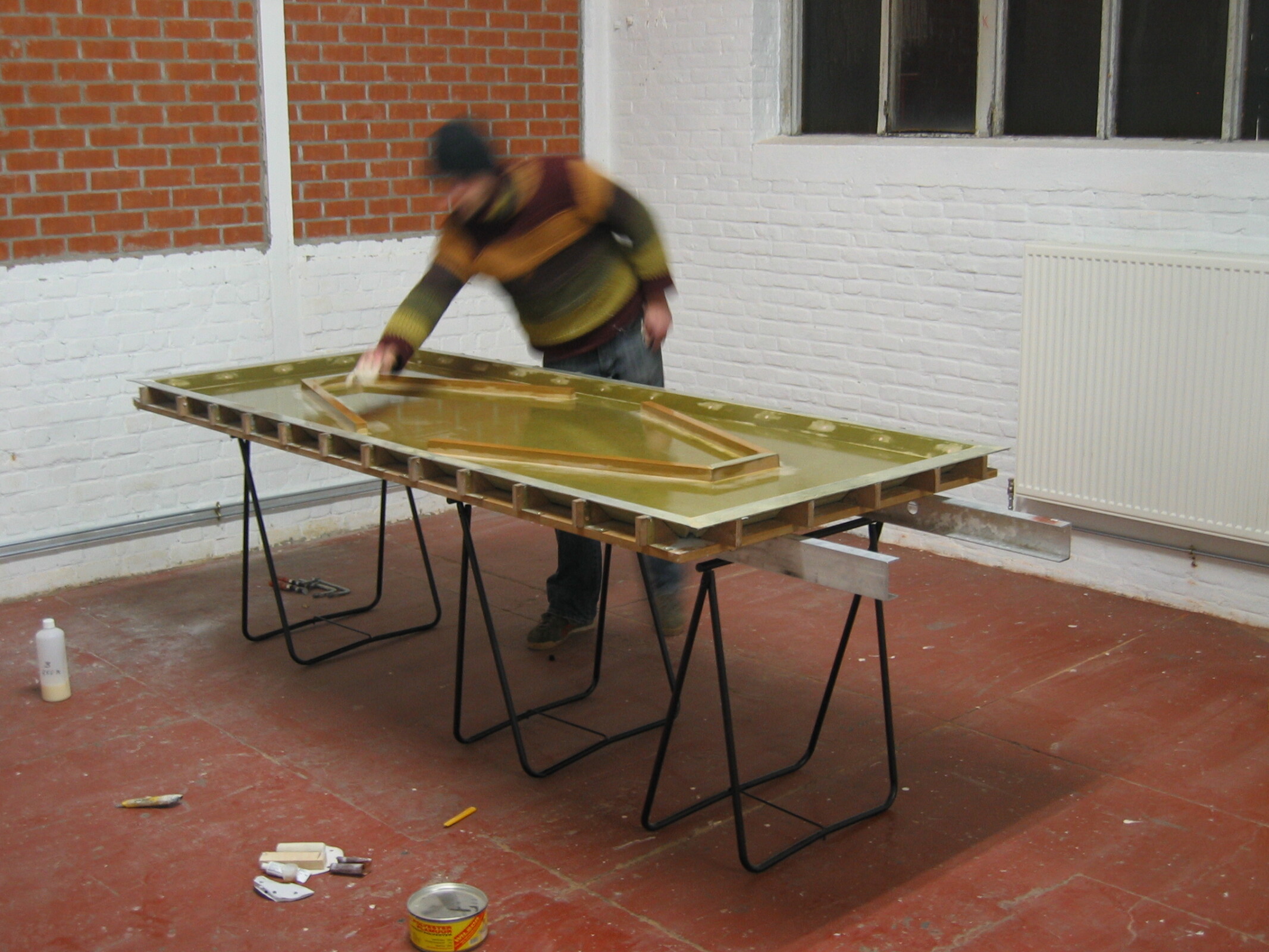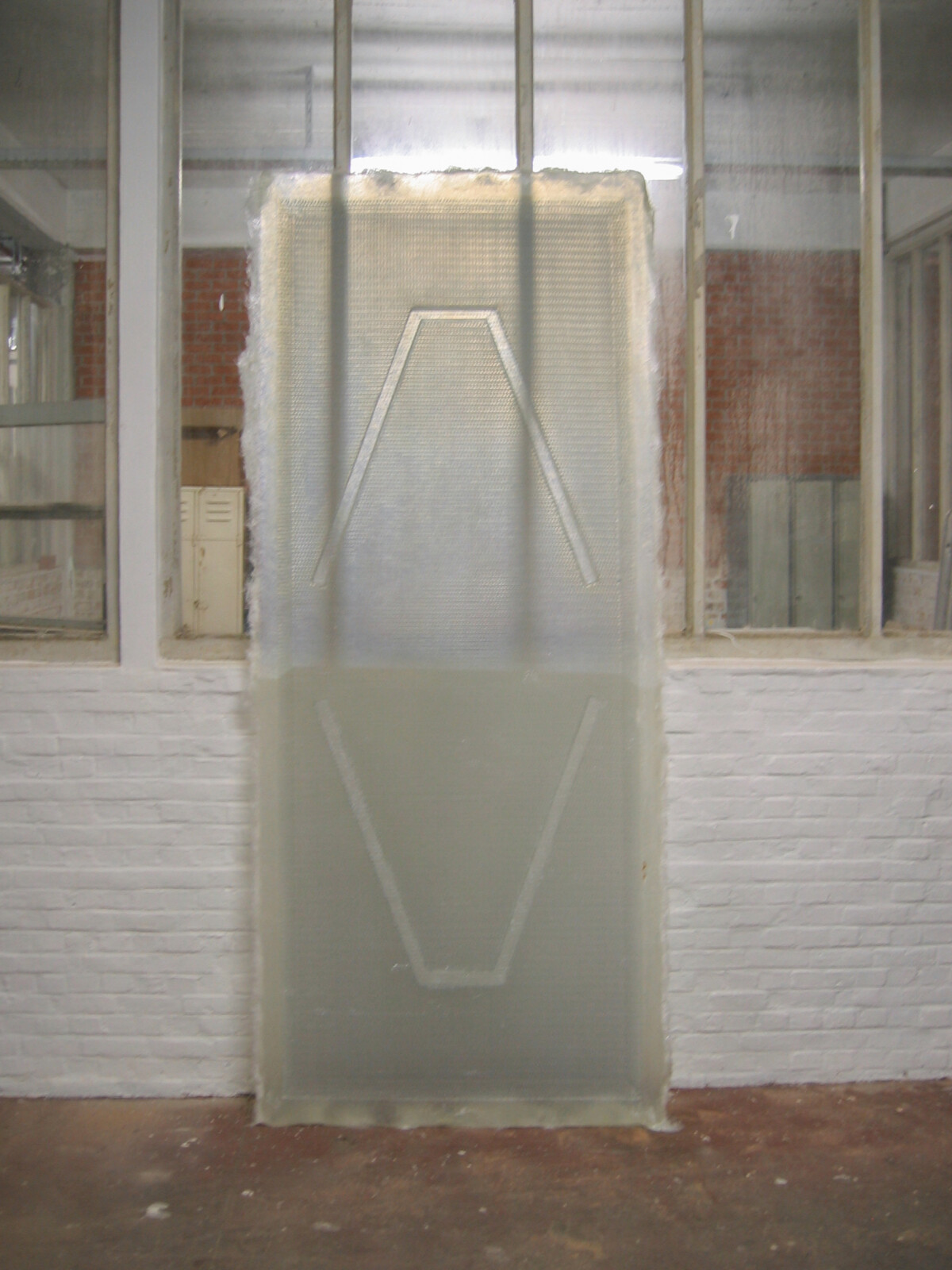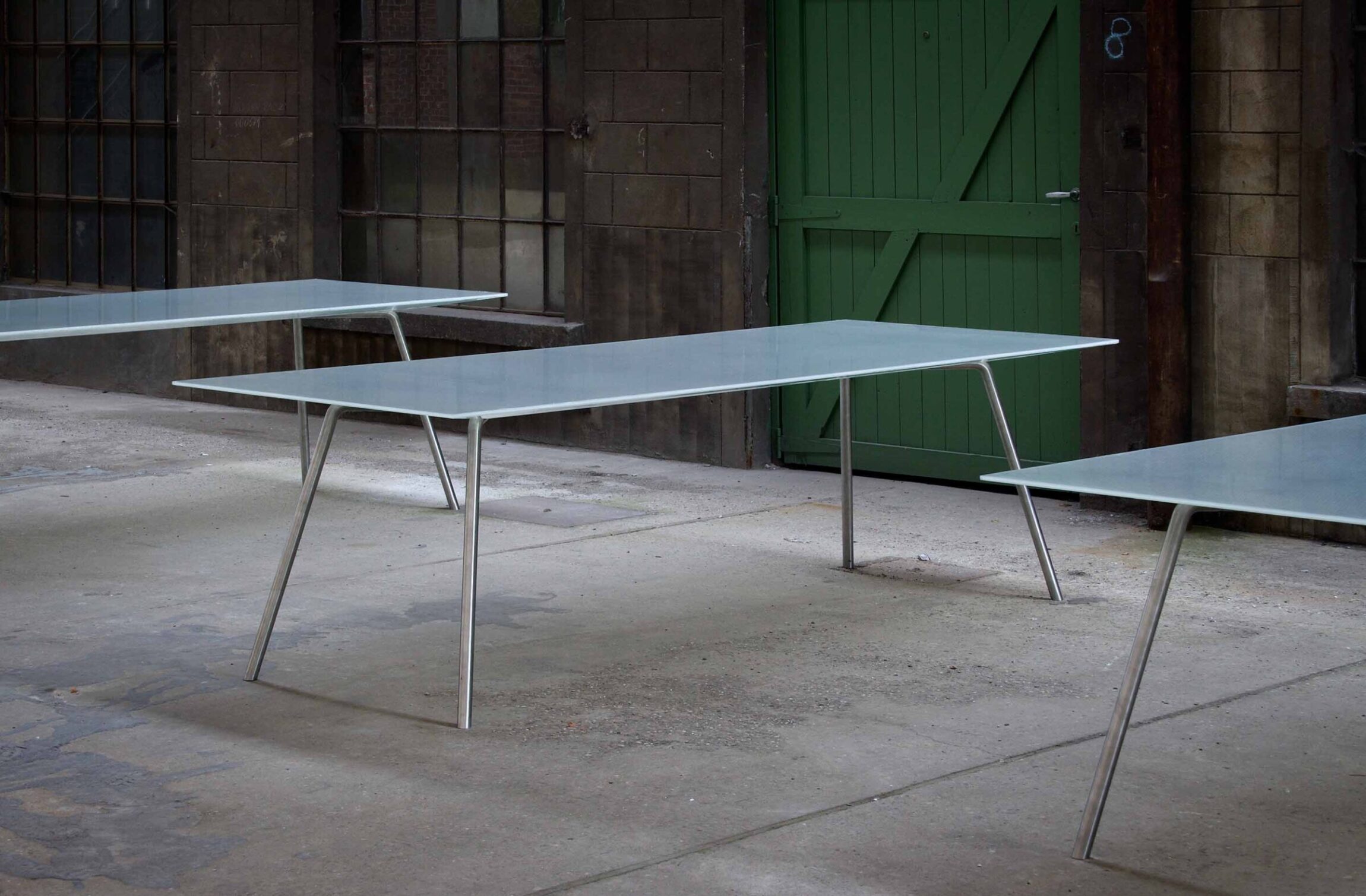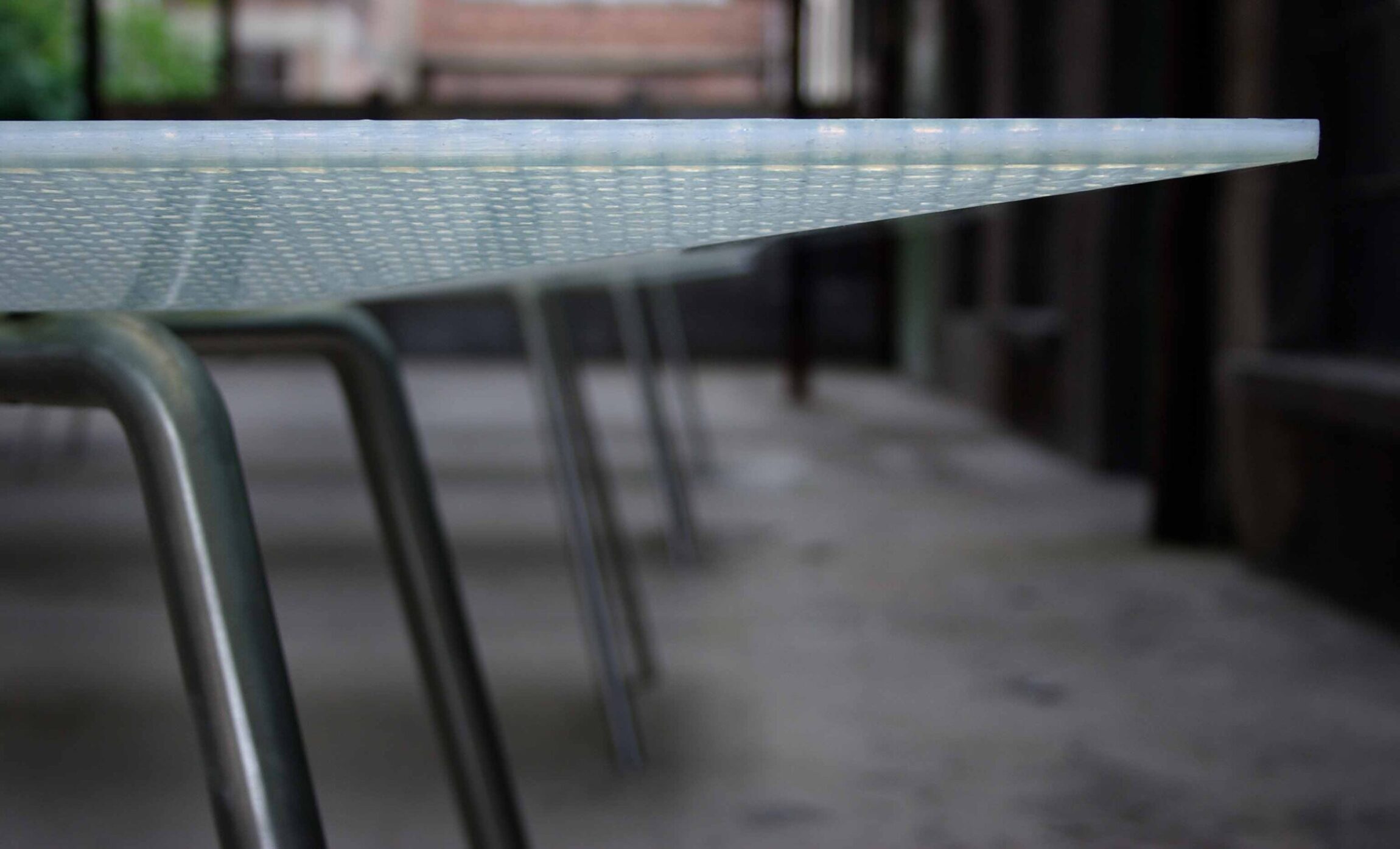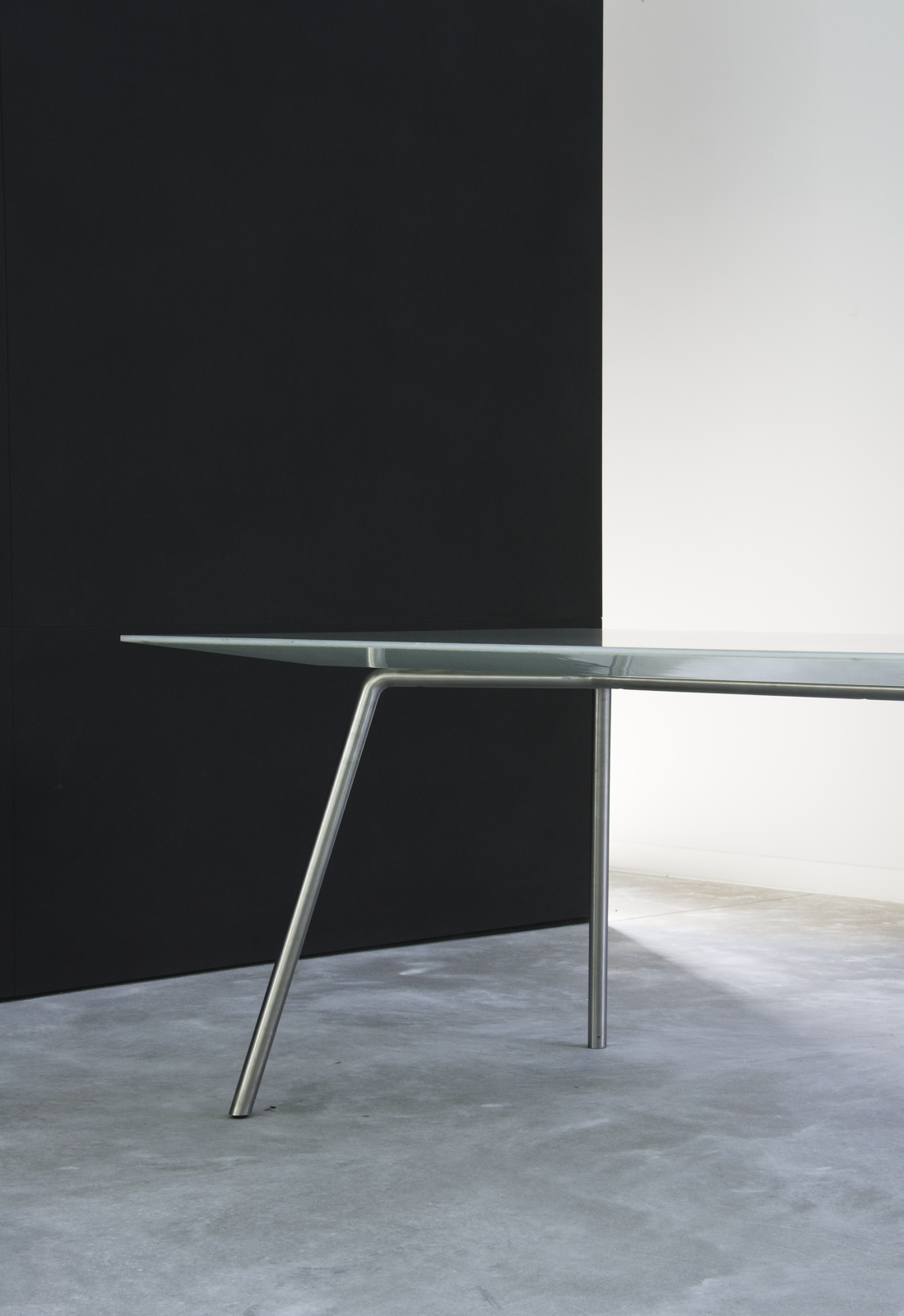This is a short story. Short stories are concentrated reflections which give space to the questions, dialogues and encounters influencing our work.
Timotheus De Beir, collaborator at NU, sat down with the founders of NU to talk about Table 01, an early research in materiality and furniture experiment.
Before the official establishment of their own practice, Halewijn Lievens and Armand Eeckels were already fascinated by the design potential of new materials. This research resulted in different kinds of projects, among which furniture design. In this series, Timotheus De Beir focuses per typology on a project by means of an interview with the two founders of NU. The word atelier serves as a key notion.
Timotheus De Beir: Where did the idea of designing the table come from?
Armand Eeckels, Halewijn Lievens: In 2003 we were asked to design a partition wall for Maarten Van Severen’s Boxy kitchen pavilion. Excited by the idea of working with a translucent material for this project, we started experimenting with the potential of this new material. In the basement of the house we were living in at the time, we made countless material tests in polyester such as rolls of toilet paper, laminated cardboard tubes and cores in polyethylene. Eventually we came up with the idea of developing a translucent sandwich panel with a honeycomb structure.
As we pursued our interest in working with translucent materials, the idea to develop a table in a similar material, grew firmly. We saw an interesting challenge in realising a ‘shadowless’ table top. All summed up, our investigations started from a fascination with the potential of the material, rather than the idea of designing a table. We named the resulting piece Table 01.
TDB: Can you explain the process of making the table?
AE/HL: We didn’t make it easy for ourselves. The whole process was manual and about 99 per cent of it was explorative, and therefor partly unpredictable. Working with a translucent material means that there are different chemical components and treatment methods involved. This made it necessary to experiment and test through prototyping.
There are much easier ways to make a table, of course. If you are working with wood, for example, and you saw into a board incorrectly, you can correct your mistake with a fresh piece of wood. When working with a mould, you spend three weeks preparing and hope that the end result works. For every mistake, for every bubble in the material; if one stage in the process goes wrong, you have to start all over again. The process almost felt like we were developing some kind of jewel.
TDB: Where there any highs and lows that you encountered during the creation process?
AE/HL: For us, a sense of pioneering was as important in this process as it is for us in our current projects. If we had known in advance where we were going with the design, we probably wouldn’t have done it. Every intermediate stage in the creative process brought wonder and satisfaction, especially when something that we were aiming for really worked. Though we started this experiment without a client in mind, it was very satisfying to suddenly receive an order for four tables to furnish the office design for Linq, one of our earlier projects. To date, only six pieces of Table 01 have been produced, the two other tables being owned by our office and photographer Frederick Vercruysse, respectively.
While the development and production of the tables evolved intuitively, there were naturally frustrations along the way. Especially when we bumped into the wall of feasibility at the Boxy kitchen pavilion and had to cover the additional costs ourselves. In the end, these setbacks were secondary to the wealth of knowledge we gained. All the experimentation made us unexpected specialists in glass reinforced resin.
TDB: This might be a very obvious question given the unviability of the material choice today, but what would you choose to do differently were you to approach the design of Table 01 again?
AE/HL: Of course in today’s society there is no place for a material like polyester. In addition, the production process took place in extreme working conditions that were far from healthy. At the time, our pursuit of experimental challenges was our greatest motivator; the other factors were quieter in our minds.
If we were ever to restart the production process, we would investigate how we could translate that product into a sustainable variant with natural resins. Table 02 with its plywood top was a step in that direction, but we didn’t find its development as exciting as the translucent Table 01. It could be that we decide to bring a new line of 01 Tables to the market one day. Though if we did, we would never opt for mass production. The beauty of the material lies in the fine craftsmanship and the thorough, sometimes far-reaching, material research.
TDB: I hope production can start soon. Thank you for sharing your story.
___
While we have only ever produced a total of six translucent tables, we are curious about the possibility of setting up a line of production for a new generation of tables. If you are interested in placing an order for a table by NU, send an email to hello@nuarchitectuuratelier.com. We would be very interested to discuss the idea further.
